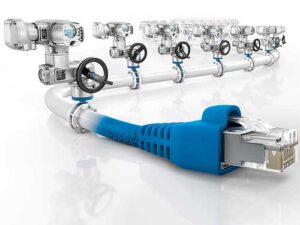Description
Profibus
Profibus offers a complete family of fieldbus versions: Profibus PA for process automation, Profinet for data transmission based on Ethernet and Profibus DP for automating plants, power plants and machines. Due to its simple and robust physical layer (RS-485) and the different service levels DP-V0 (fast cyclic and deterministic data exchange), DP-V1 (acyclic access to device parameters and diagnostic data) as well as DP-V2 (further functions such as time stamp or redundancy), Profibus DP is the ideal solution for plant automation.- International standard (www.profibus.com)
- Worldwide distribution
- Large installation base
- Standardised integration within the DCS (FDT, EDD) Large selection of devices
- Typical applications: Power plants, sewage treatment plants, water treatment plants, tank farms
Modbus
In comparison with other fieldbus technologies, Modbus is simple but has a multi-functional fieldbus protocol. It offers all services required for plant automation, e.g. exchange of simple, binary information, analogue values, device parameters or diagnostic data. For plant Automation and similar to Profibus, the simple and robust physical layer RS-485 is often used. On the basis of this physical layer, Modbus supports various telegram formats, e.g. Modbus RTU or Modbus ASCII. Using the Modbus TCP/IP version based on Ethernet, vertical integration into a host Automation system is often implemented.
International standard (www.modbus.org)
Simple protocol
Worldwide distribution
Largely sufficient for many simple automation tasks
Typical applications: Water and wastewater treatment plants,
pumping stations, tank farms



